Industrial spray dryer overview:
Industrial spray dryer is a kind of drying equipment commonly used in pharmaceutical, food, chemical and other fields. It is suitable for transforming liquid raw materials such as solutions, emulsions and pumpable suspensions into powder, granular or blocky solid products. The different drying characteristics of materials, as well as the different quality requirements for particle size, particle size distribution, residual moisture content, bulk density, and particle shape of products, determine the use of different atomizers, airflow movement methods, and the structural form of drying rooms.

Industrial spray dryer working principle:
The air is filtered and heated before entering the top air distributor of the dryer, and the hot air enters the drying chamber uniformly in a spiral shape. The feed liquid passes through the high-speed centrifugal atomizer on the top of the drying tower, and (rotating) spray into extremely fine mist like liquid beads, which can be dried into finished products in a very short time in parallel with hot air. The finished product is continuously output from the bottom of the drying tower and the cyclone separator, and the exhaust gas is discharged by the fan.
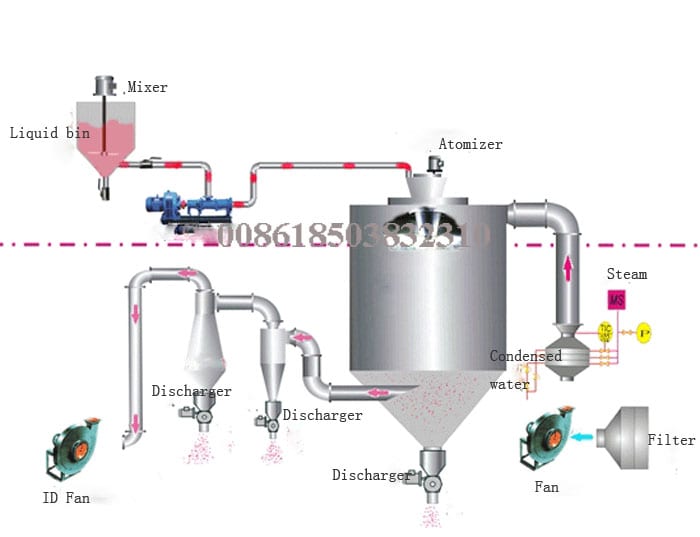
Industrial spray dryer machine structure:
Industrial spray dryer is mainly composed of four parts, namely liquid material supply system, liquid material atomization system, drying tower, hot air system, cyclone collection system and control system.
- Liquid material supply system: it includes storage, filtration, transportation, and other parts of the material liquid. The feed liquid is pressurized from the spray gun into the drying tower by the feed pump at a certain pressure. If the feed liquid contains impurities or large particles, it needs to be filtered through a filter.
- Liquid material atomizer: It is the core component of the industrial spray dryer, which sprays liquid substances into mist like substances. Spray system includes spray gun and spray nozzle. The spray gun atomizes the liquid into fine droplets, and the size and shape of the spray nozzle directly affect the size and distribution of the droplets.
- Drying tower: It is the main part of the industrial spray dryer. The hot air enters the drying tower from the top to fully contact with the material liquid droplets sprayed from the spray gun to achieve the drying of materials. The design of the internal structure of the drying tower will affect the drying effect of the materials.
- Hot air system: It includes a blower and a heater. The blower introduces air into the heater for heating, and then enters the drying tower to come into contact with the feed liquid. The temperature and flow rate of hot air can affect the drying effect of materials.
- Powder collection system: Dried particles will be discharged from the lower part of the drying tower and enter the collection system for collection. The collection system usually includes a cyclone separator and a dust collector for separating and collecting dried particles.
- Control system: it includes various sensors and control instruments, which are used to monitor and control various parameters of the spray dryer, such as temperature, pressure, droplet size, etc.
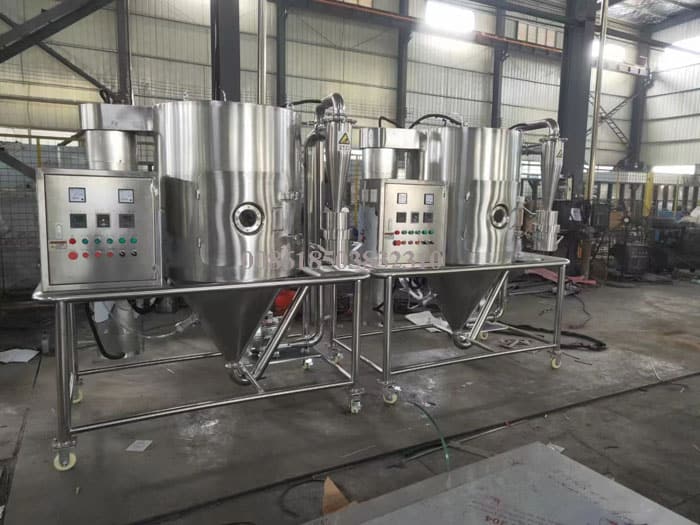
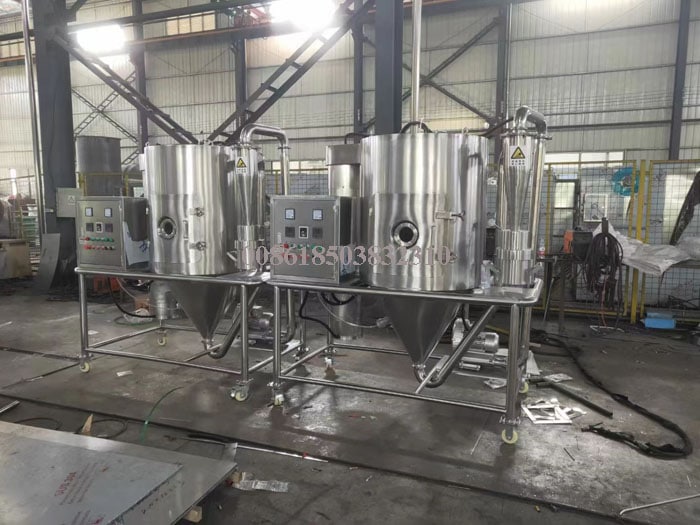
Industrial spray dryer application:
- Chemical industry: sodium fluoride (potassium), alkaline dye pigments, dye intermediates, composite fertilizers, formaldehyde silicic acid, catalysts, sulfuric acid agents, amino acids, white carbon black, etc.
- Plastic resin: AB, ABS lotion, urea formaldehyde resin, phenolic resin, sealant (urea) formaldehyde resin, polyethylene, PVC, etc.
- Food industry: milk powder, gluten, cocoa powder, coffee powder, milk substitute powder, blood powder, egg white (yolk) powder, etc.
- Food and plants: oats, chicken essence, coffee, instant tea, spice meat, protein, soybean, peanut protein, hydrolysate, etc.
- Carbohydrates: corn syrup, corn starch, glucose, pectin, maltose, potassium sorbate, etc.
- Ceramics: alumina, ceramic tile materials, magnesium oxide, talc powder, etc.
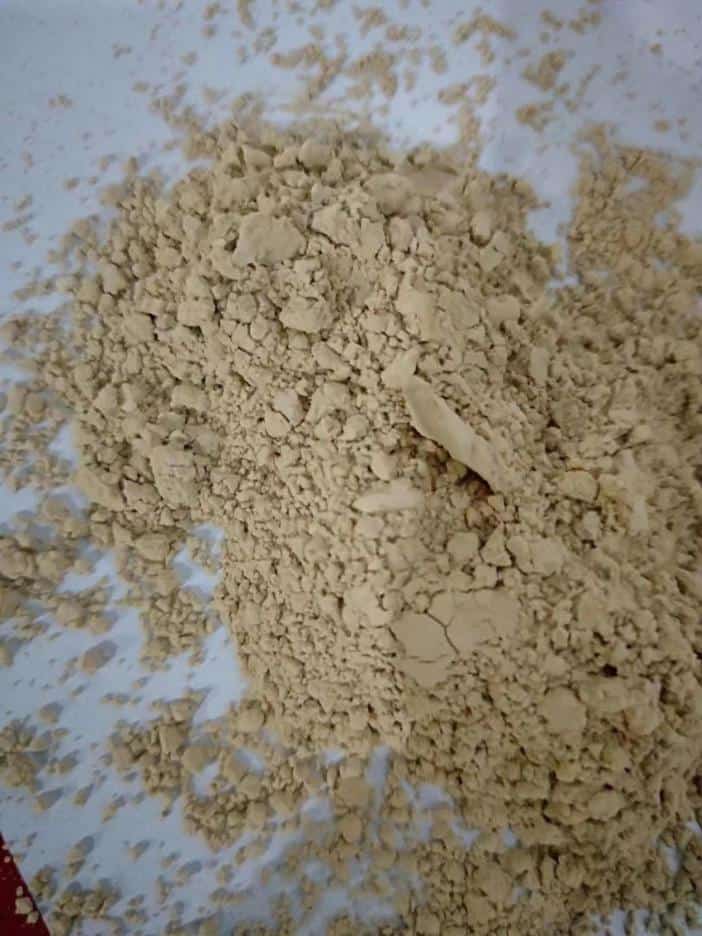
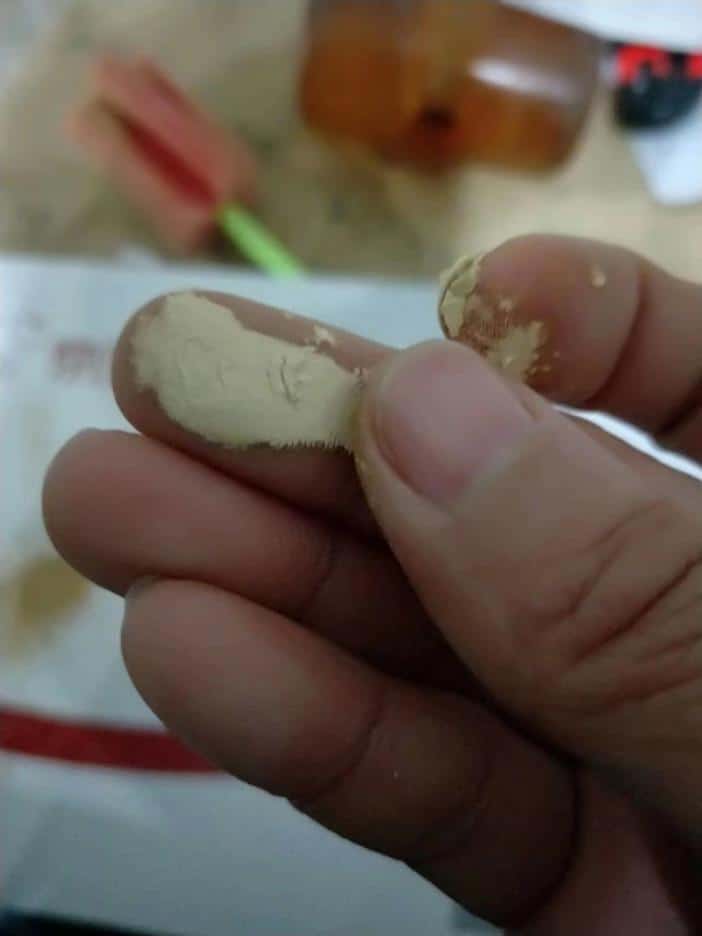
Industrial spray dryer technical data
| Model | LPG5 | LPG25 | LPG50 | LPG100 | LPG150 | LPG200-2000 |
|---|---|---|---|---|---|---|
| Power | 9KW | 36KW | 63KW | 81KW | 99KW | |
| Water evaporation | 5KG | 25KG | 50KG | 100KG | 150KG | 200-2000 |
| Inlet tem | 140-350℃ | 140-350℃ | 140-350℃ | 140-350℃ | 140-350℃ | 140-350℃ |
| Outlet tem | 80-90℃ | 80-90℃ | 80-90℃ | 80-90℃ | 80-90℃ | 80-90℃ |
| Spray disk diam | 50mm | 100mm | 120mm | 140mm | 150mm | 180-340mm |
| Dimension | 1.8*0.93*3.2m | 3*2.7*4.26m | 3.7*3.2*5.1m | 4.6*4.2*6m | 5.5*4.5*7m |
How to choose suitable industrial spray dryer machine?
When you need industrial spray dryer machine, you can provide the information as below, our engineer will recommend suitable model for your use. The more information we talked, the more suitable solution we can provide.
- Liquid name and physical properties: solid content (or water content), viscosity, surface tension, pH value.
- Dry powder capacity, allowable residual moisture content, particle size, and allowable maximum temperature.
- Production capacity and daily shift start time.
- Available energy sources: steam pressure available, capacitance available, coal, oil, and gas available
- Control requirements: Do the inlet and outlet temperatures require self-control
- Powder collection requirements: Should bag filters be installed or not? Environmental requirements for exhaust emissions
- Other special requirements
FAQ about industrial spray dryer machine
- Powder yield is low
If the yield is very low after spray drying, it may be because the product sticks to the drying chamber. When this situation occurs, the feeding speed and quantity should be slowed down, and the feeding pump should be adjusted appropriately. At the same time, increase the inlet and outlet temperatures and observe whether there is material blockage in the equipment.
If there is no sticking in the drying chamber, it may be due to the high air flow rate of the circulating fan, which takes some fine particle products or lighter products away from the cyclone separator and directly reaches the filter bag. At this point, the air flow rate of the circulating fan can be reduced to reduce the power of product particles, or the product particle size can be increased by increasing the solid content and feed rate to increase product weight.
2. There are impurities in the product
First of all, there are impurities in the materials of the spray dryer, which are not filtered out during the filtering process. The solution is to check the air filter and replace the filter according to the situation;
Secondly, the purity of the material solution is not high. The solution is to sample and test the material solution to filter out impurities;
Thirdly, the equipment contains impurities. The solution is to regularly clean the equipment thoroughly to remove impurities.
